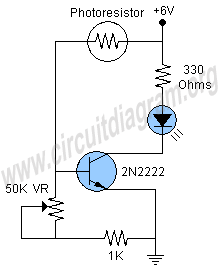
USB LED Lamp Circuit using 5 Volts

A simple USB LED lamp circuit utilizing a 5-volt power supply sourced from a USB port, designed to illuminate a desktop or laptop computer during power outages.
The USB LED lamp circuit operates by converting the 5-volt DC power provided by a USB port into sufficient power to drive one or more light-emitting diodes (LEDs). The circuit typically includes a USB connector, a current-limiting resistor, and the LEDs themselves.
The USB connector serves as the interface to connect the lamp to any standard USB power source, such as a computer or a USB wall adapter. The current-limiting resistor is crucial as it prevents excessive current from flowing through the LEDs, which could otherwise lead to damage. The value of this resistor is calculated based on the forward voltage and current specifications of the LEDs used in the circuit.
For instance, if the forward voltage of the LED is approximately 2 volts, and the desired forward current is 20 mA, the resistor can be calculated using Ohm's law. The voltage drop across the resistor will be the difference between the USB supply voltage and the LED forward voltage, which is 3 volts in this case. The resistor value can be calculated as follows:
R = V/I = 3V / 0.02A = 150 ohms.
In practical applications, a standard resistor value of 150 ohms or 180 ohms can be used. The circuit can be configured to connect multiple LEDs in series or parallel, depending on the desired brightness and the total forward voltage of the LED configuration.
The assembly of the circuit can be done on a small PCB or a breadboard for prototyping. The LEDs can be mounted directly to the board, and the connections should be soldered securely to ensure reliability. The final assembly can include a protective casing to prevent damage from external factors and to enhance portability.
This USB LED lamp circuit is particularly useful for providing illumination in low-light conditions, making it an effective solution for temporary lighting needs during power failures. The simplicity of the design allows for easy replication and modification, which can be tailored to specific lighting requirements or aesthetic preferences.A simple usb LED lamp circuit using 5 volts power supply from usb port, which can be used to light a desktop or laptop computer during power failure.. 🔗 External reference
The USB LED lamp circuit operates by converting the 5-volt DC power provided by a USB port into sufficient power to drive one or more light-emitting diodes (LEDs). The circuit typically includes a USB connector, a current-limiting resistor, and the LEDs themselves.
The USB connector serves as the interface to connect the lamp to any standard USB power source, such as a computer or a USB wall adapter. The current-limiting resistor is crucial as it prevents excessive current from flowing through the LEDs, which could otherwise lead to damage. The value of this resistor is calculated based on the forward voltage and current specifications of the LEDs used in the circuit.
For instance, if the forward voltage of the LED is approximately 2 volts, and the desired forward current is 20 mA, the resistor can be calculated using Ohm's law. The voltage drop across the resistor will be the difference between the USB supply voltage and the LED forward voltage, which is 3 volts in this case. The resistor value can be calculated as follows:
R = V/I = 3V / 0.02A = 150 ohms.
In practical applications, a standard resistor value of 150 ohms or 180 ohms can be used. The circuit can be configured to connect multiple LEDs in series or parallel, depending on the desired brightness and the total forward voltage of the LED configuration.
The assembly of the circuit can be done on a small PCB or a breadboard for prototyping. The LEDs can be mounted directly to the board, and the connections should be soldered securely to ensure reliability. The final assembly can include a protective casing to prevent damage from external factors and to enhance portability.
This USB LED lamp circuit is particularly useful for providing illumination in low-light conditions, making it an effective solution for temporary lighting needs during power failures. The simplicity of the design allows for easy replication and modification, which can be tailored to specific lighting requirements or aesthetic preferences.A simple usb LED lamp circuit using 5 volts power supply from usb port, which can be used to light a desktop or laptop computer during power failure.. 🔗 External reference





